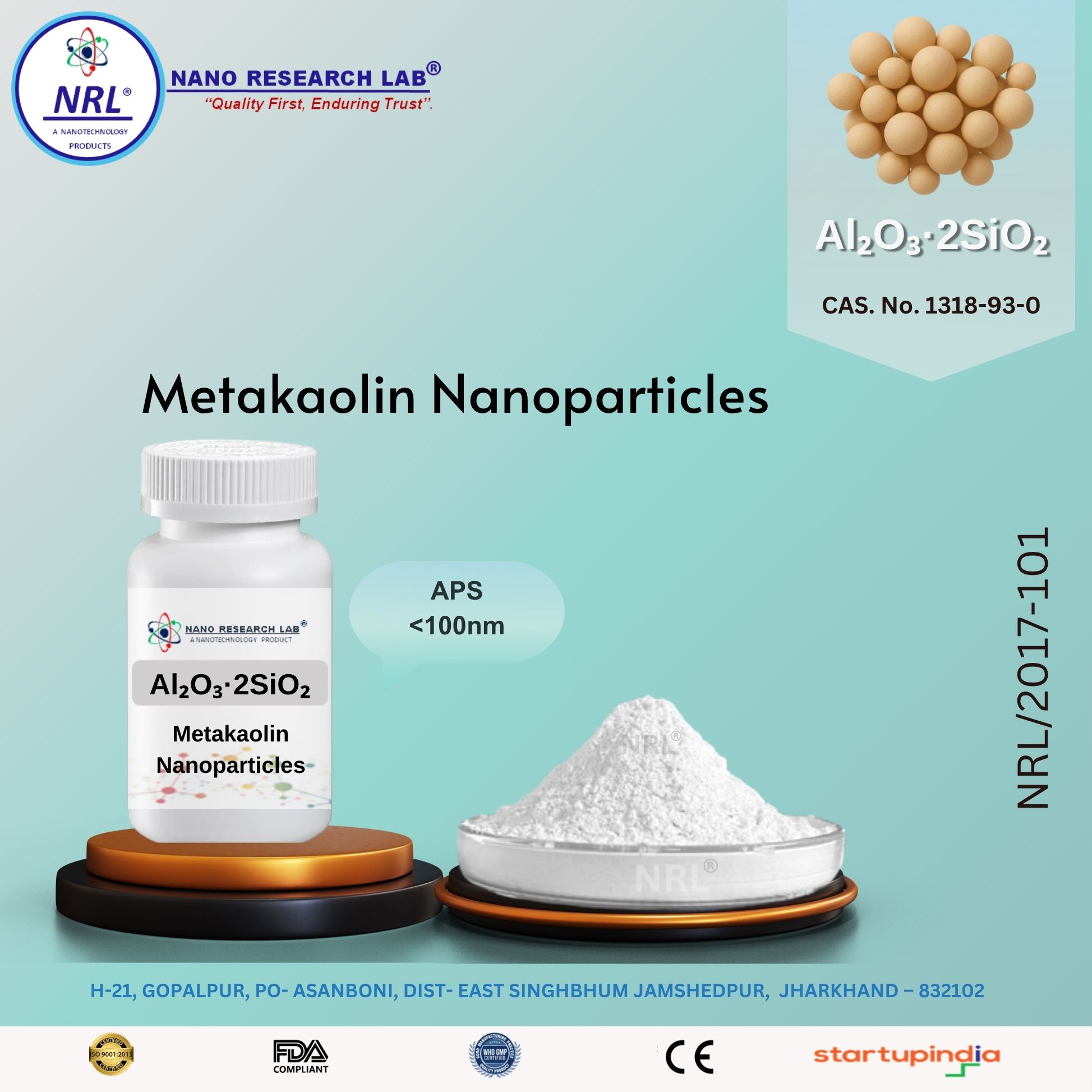
Metakaolin Nanoparticles / Nanopowder (Al₂O₃·2SiO₂ <100 nm, Purity 99.5%)
₹1475.00
Metakaolin Nanoparticles / Nanopowder (<100 nm, Purity 99.5%)
⚙️ Technical Specifications
Property | Specification |
|---|---|
Product Name | Metakaolin Nanoparticles / Nanopowder |
Chemical Formula | Al₂O₃·2SiO₂ (dehydroxylated kaolin) |
Purity | ≥ 99.5% |
Average Particle Size (APS) | <100 nm |
Appearance | White to off-white fine powder |
Crystal Structure | Amorphous (dehydroxylated aluminosilicate) |
Density | ~2.3–2.6 g/cm³ |
pH (aqueous suspension) | Slightly alkaline (~8–9) |
Solubility | Insoluble in water; stable under ambient conditions |
CAS Number | 1318-93-0 (kaolin, natural precursor) |
🌟 Key Features
High-purity (99.5%) nanoparticles with <100 nm particle size
Highly reactive pozzolanic material
High surface area ensures enhanced binding and mechanical properties
Thermally stable up to ~750°C
Non-toxic and environmentally safe
Ideal for cement, concrete, and advanced material applications
🔬 Applications (in Detail)
1. Cement & Concrete Industry
Acts as a nano-pozzolan to improve strength, durability, and workability
Reduces permeability, shrinkage, and cracking
Enhances hydration and early strength development
2. Polymer & Composite Materials
Used as a reinforcing filler in polymers, epoxy resins, and nanocomposites
Improves mechanical strength, thermal stability, and surface finish
3. Ceramics & Coatings
Enhances ceramic strength, whiteness, and thermal stability
Used in coatings and refractory materials
4. Environmental Applications
Functions as a support or adsorbent in water purification and pollutant removal
Can enhance sorption of heavy metals and dyes
5. Research & Nanotechnology
Suitable for nano-pozzolan studies, composite material development, and functional nanomaterial research
⚠️ Handling & Storage
Store in a sealed, dry container, away from moisture and strong acids
Handle with gloves, mask, and eye protection to prevent inhalation or contact
Stable under ambient and laboratory conditions
Avoid prolonged exposure to high humidity or reactive chemicals
